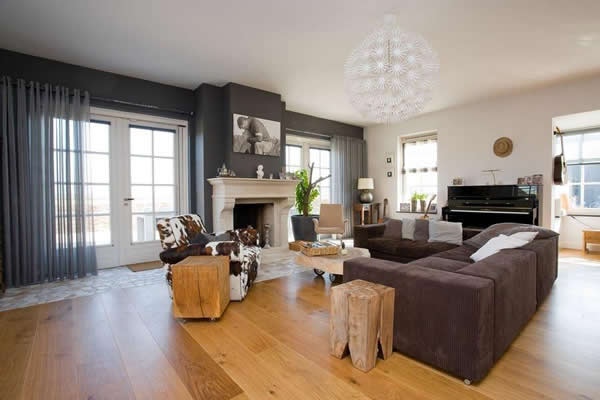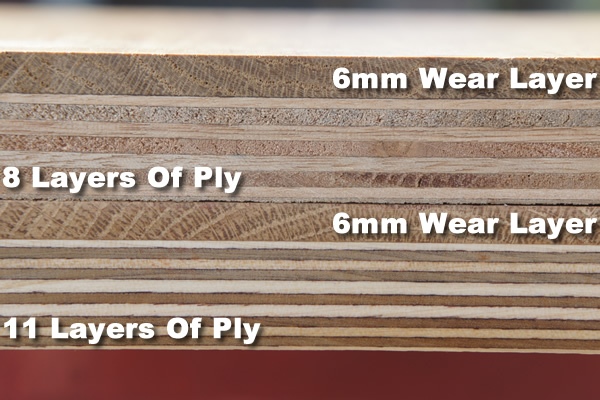What Thickness Of Engineered Oak Flooring Should I Choose?
1st Oct 2014 @ 16:19
The oak flooring market is a minefield. Yet perhaps even more complicated is the engineered oak flooring market. It can often be very difficult to know exactly what is right for your situation. Engineered oak flooring is available in a number of grades, widths and finishes. The thickness of board is also something that can vary. So what should you be looking out for with regards to the thickness of engineered oak flooring?
Its important to begin with what engineered oak flooring is. Engineered oak flooring boards are a combination of a top layer of solid oak, which is bonded to a ply-board base. Engineered oak flooring was effectively created for those modern day situations where a solid oak floor would not be suitable. Engineered oak boards bring more stability, when compared to traditional solid oak flooring. Solid oak is susceptible to movement caused by changes in humidity, whilst engineered oak flooring is much less prone to these changes. This makes engineered oak flooring perfect for areas with underfloor heating, conservatories, kitchens and bathrooms.

The thickness of the board, and its construction, is a hugely important factor when choosing an engineered oak board.
All of our engineered oak flooring is 20mm thick. Our boards consist of 6mm of solid oak, bonded to a 14mm thick Siberian birch ply base. This results in a very strong, and very stable engineered oak board.
Whilst browsing the engineered oak flooring market you may also notice there are thinner engineered oak boards available. The only real advantage of a thinner engineered oak board is for those areas where room height is a serious issue. Otherwise we would always recommend opting for a thicker engineered board.
Thinner engineered oak boards mean a thinner wear layer and thinner ply-board base. The thinner wear layer will mean there are less sandings available, making the floor not as hard wearing. The ply-board base is what makes an engineered board so stable and able to cope with variable humidity levels. A thinner ply-board base will be less stable, and less able to cope with these changes.

The amount of layers is a further point that should be considered when choosing engineered oak boards. A higher number of layers, used alongside good quality ply-board, will mean a higher quality engineered oak board. Less layers, with lesser quality ply-board, will mean a poorer quality engineered oak board.
Whatever engineered oak board you choose, we always recommend you see the product first. If you would like to discuss engineered oak flooring further with us, please give us a call on 01538 304584.




Add a comment